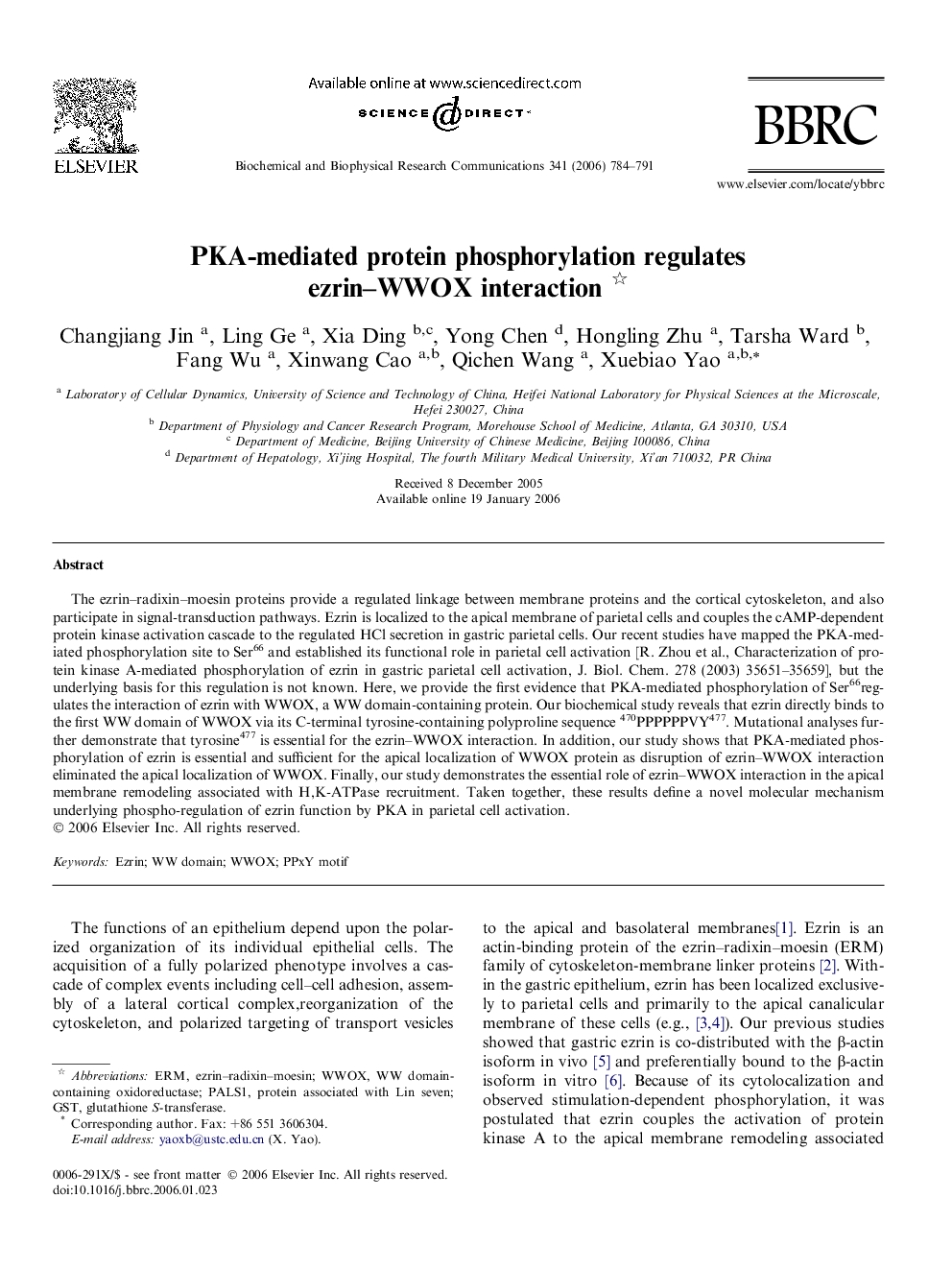| Article ID | Journal | Published Year | Pages | File Type |
|---|---|---|---|---|
| 1940461 | Biochemical and Biophysical Research Communications | 2006 | 8 Pages |
The ezrin–radixin–moesin proteins provide a regulated linkage between membrane proteins and the cortical cytoskeleton, and also participate in signal-transduction pathways. Ezrin is localized to the apical membrane of parietal cells and couples the cAMP-dependent protein kinase activation cascade to the regulated HCl secretion in gastric parietal cells. Our recent studies have mapped the PKA-mediated phosphorylation site to Ser66 and established its functional role in parietal cell activation [R. Zhou et al., Characterization of protein kinase A-mediated phosphorylation of ezrin in gastric parietal cell activation, J. Biol. Chem. 278 (2003) 35651–35659], but the underlying basis for this regulation is not known. Here, we provide the first evidence that PKA-mediated phosphorylation of Ser66regulates the interaction of ezrin with WWOX, a WW domain-containing protein. Our biochemical study reveals that ezrin directly binds to the first WW domain of WWOX via its C-terminal tyrosine-containing polyproline sequence 470PPPPPPVY477. Mutational analyses further demonstrate that tyrosine477 is essential for the ezrin–WWOX interaction. In addition, our study shows that PKA-mediated phosphorylation of ezrin is essential and sufficient for the apical localization of WWOX protein as disruption of ezrin–WWOX interaction eliminated the apical localization of WWOX. Finally, our study demonstrates the essential role of ezrin–WWOX interaction in the apical membrane remodeling associated with H,K-ATPase recruitment. Taken together, these results define a novel molecular mechanism underlying phospho-regulation of ezrin function by PKA in parietal cell activation.
